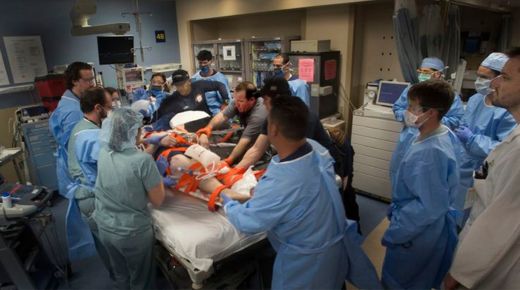
Radiologists play a critical role in trauma surgery. They work behind the scenes, yet their contributions are vital. These skilled professionals use advanced imaging to assess injuries quickly and accurately. For instance, RIA Endovascular specialists often provide life-saving insights in emergencies. Radiologists help guide surgeons during complex procedures. Their expertise aids in decision-making, ensuring better outcomes for patients. Understanding their role can deepen appreciation for their essential work in healthcare.
How Radiologists Contribute to Trauma Care
In trauma settings, time is of the essence. Radiologists enable swift assessment through imaging techniques such as X-rays, CT scans, and MRIs. These images reveal the extent of injuries, helping surgeons plan and perform procedures with precision. Radiologists often act as the eyes of the surgical team, identifying issues that may not be visible during an operation.
Their input can dictate the course of action—whether surgery is required or if less invasive treatments might suffice. Additionally, radiologists can identify complications early, allowing for timely interventions that can save lives. For more information on how radiology impacts trauma care, you can visit the CDC’s injury statistics page.
Key Imaging Techniques Used
Radiologists use several key imaging techniques to assist in trauma surgery:
- X-rays: Ideal for quick assessments of bone fractures and dislocations.
- CT Scans: Provide detailed images of organs, bones, and blood vessels, crucial for diagnosing internal injuries.
- MRIs: Offer detailed images of soft tissues, useful for detecting ligament and muscle injuries.
Each technique has its strengths and is chosen based on the type of injury and the information needed by the surgical team.
The Collaborative Nature of Trauma Surgery
Trauma surgery is a team effort where radiologists collaborate closely with surgeons, nurses, and anesthesiologists. This collaboration ensures that each patient receives comprehensive care. By interpreting complex images, radiologists inform surgical strategies, enhancing the precision and effectiveness of interventions.
Radiologists’ collaboration extends beyond the operating room. They often participate in post-operative assessments to monitor recovery and detect any complications. Such collaboration improves patient outcomes and recovery times.
Comparison of Imaging Techniques
| Imaging Technique | Best For | Limitations |
| X-rays | Bone fractures, dislocations | Limited soft tissue detail |
| CT Scans | Internal organs, blood vessels | Higher radiation exposure |
| MRIs | Soft tissues, ligaments | Longer scan times, not suitable for all patients |
The Future of Radiology in Trauma Care
The field of radiology continues to evolve with technological advances. Innovations such as AI in image analysis and 3D imaging are set to enhance the speed and accuracy of diagnoses. These advancements promise to further integrate radiologists into the trauma care team, improving patient outcomes.
Future developments also include portable imaging devices that can be used directly in trauma settings. Such technologies allow for immediate assessments without transporting patients to radiology units. To learn more about the future of radiology, consider visiting the AHRQ’s Health IT website.
In conclusion, radiologists are indispensable in trauma surgery. Their expertise in imaging leads to accurate diagnoses and effective treatment plans. As technology progresses, their role in trauma care will likely expand, continuing to improve the lives of patients worldwide.
